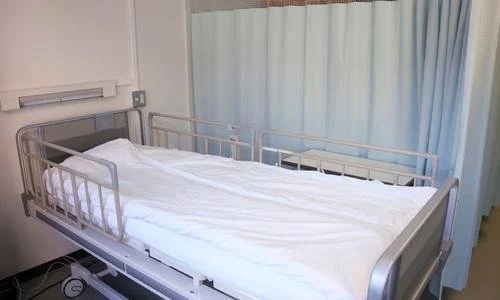The Advantages & Disadvantages of a Hospital Bed
It’s essential to weigh the advantages and disadvantages of hospital beds for home use before renting or buying a hospital bed. Whether or not you decide on this kind of bed for yourself or a loved one, understanding the issues involved will help you make a decision that you can be happy with.
Advantages of Hospital Beds
Improved Positioning
Whereas a normal bed is permanently flat, a hospital bed allows the patient or their caregiver to adjust the head and foot sections independently to come to a semi-seated position or raise the legs or knees. This is an important feature for patients who will be spending a significant amount of time in bed.
Foot section. Being able to raise the lower body is a great advantage for patients with a foot or knee injury or a condition that causes swelling in the feet because it encourages blood flow back to the heart.
Head section. The ability to raise the head and back to a semi-sitting position is helpful when the patient wants to watch TV or spend time with visitors. The upper panel can then be lowered again, allowing the patient to sleep comfortably.
Improved Comfort
Hospital beds, or adjustable medical beds, are made with heavy use in mind. For that reason, the typical hospital bed mattress is made from therapeutic foam that's both comfortable and strong and is covered in a thick, easy-clean vinyl outer layer.
To cushion the patient’s pressure points and prevent or treat bed sores, gel, foam, water, and reactive-air overlays are often used on top of the mattress. The head and foot sections of the home hospital bed can also be adjusted to change the patient's position, maximize comfort, and encourage circulation.
Easier Maneuvering and Transfers
Because hospital beds can be raised and lowered vertically, they make it much easier for patients to transfer to a power wheelchair or mobility aid for walking compared to regular beds. This function also makes it easier to transfer the patient from one surface to another using a sit-to-stand lift or a regular patient lift.
Patients with good upper body strength can use the overhead trapeze bar that comes with many hospital beds to help them change positions and go from sitting to standing. For the caregiver, the adjustable height that is a feature of many hospital beds can help to prevent back injuries associated with bending over for long periods of time.
Disadvantages of Hospital Beds
Single Occupancy
While two people can sleep in a regular bed, hospital beds are made to be used by one patient at a time. In a hospital setting, this is ideal because it gives nurses full access to each patient. However, in a home setting, couples may want to sleep together.
If the patient will only need the hospital bed temporarily while recovering from an illness or surgery, sleeping alone may not be a huge issue and could be the best way to keep the patient safe. For long-term use, consider two hospital beds pushed together (remember to lock the wheels) or an adjustable split-king medical bed.
Aesthetically Limited
Because of their utilitarian design, hospital beds typically come in a much smaller range of designs compared to ordinary beds—particularly as far as the headboard, footboard, and bed railing are concerned. If you're renting a hospital bed, you will have an even more limited choice of designs from which to choose. Learn the 7 most important factors when renting a hospital bed.
The good news is that—as hospital beds become more popular for home use—models are now available that look more like traditional beds and can be made to fit your existing decor. If you are looking to buy a hospital bed for long-term use, ask about the options available.
Heavier Construction
Hospital beds tend to be heavier than regular beds because of the strong frame, electric circuitry, hinges, rails, and head and footboards. Bariatric beds, in particular, weigh a lot more than regular beds thanks to their sturdy construction and extra-large bariatric mattresses. To make them easier to move, hospital beds usually come with wheels or can be broken apart, so you should never have to lift the entire bed.
If you or a loved one requires a hospital bed, consider putting the bed on the ground floor of the home in a room that's easy for the patient and others to access. When renting or purchasing the bed, it's also well worth having it delivered. Don't risk injuring yourself.
Requires a Power Outlet
Semi-electric hospital beds and full-electric beds—such as the ones rented and sold at our Denver, Colorado showroom—need to be plugged into a power outlet to power the motor that adjusts the bed. The original manual hospital beds didn't require powering because they were adjusted via a hand crank.
While a manual bed might be too cumbersome for a caregiver who is physically weak, semi-electric beds offer a good compromise—the convenience of an electric bed with or without a hand crank to change the vertical height.
Hospital Beds Are an Excellent Solution for People with Limited Mobility
When you weigh all factors, hospital beds offer more advantages than disadvantages for a patient who needs additional comfort, safety, and assistance. The few disadvantages that can come with hospital beds (such as separate sleeping, aesthetics, weight, and a power source) are easy to work around and shouldn't be a problem for most.
If you need more help deciding which mobility aids would be most appropriate for yourself or a loved one, consult with your doctor, physical therapist, and an experienced medical supply professional. The right equipment for the right person can have a significant impact on their quality of life.

